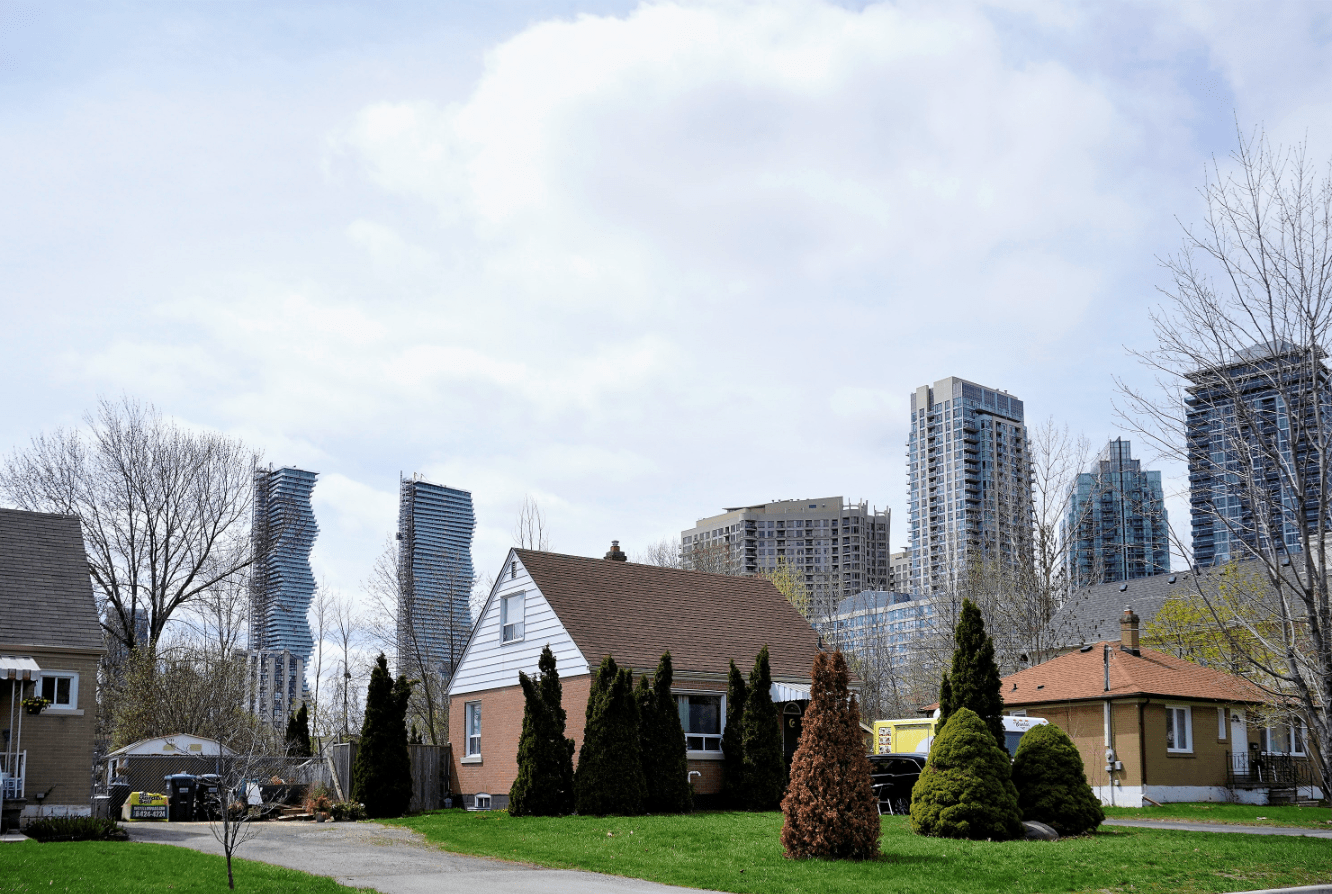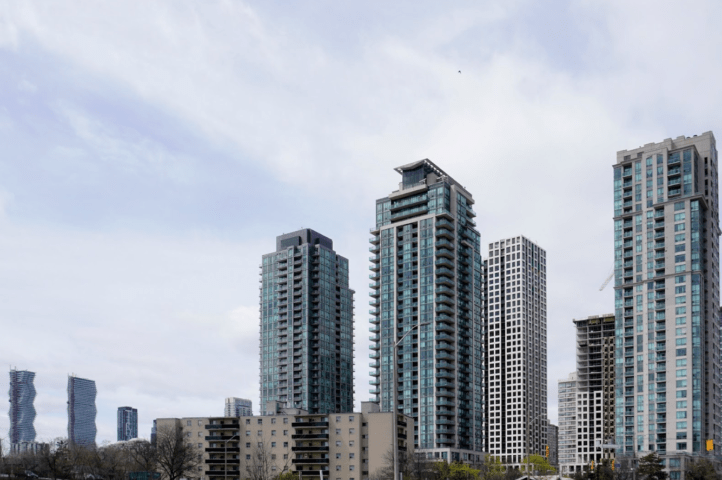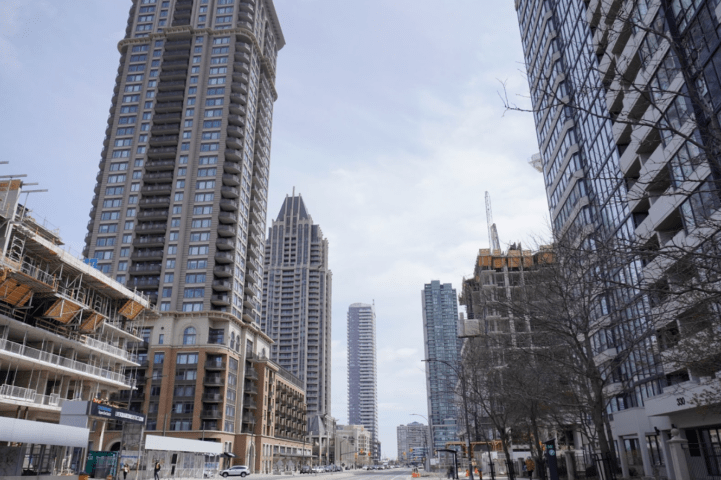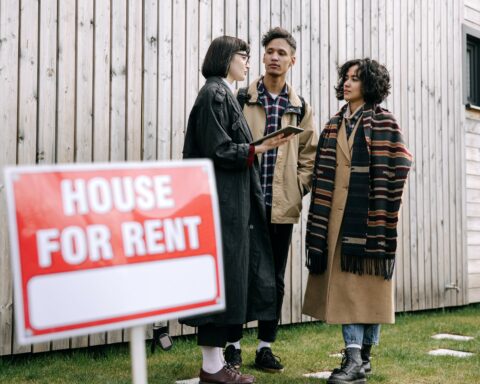The bustling metropolis is in the throes of heavy growth with a projected 995,000 residents by 2051. A new housing plan focussed on “building up and not out” could determine how the city looks and functions in the future as homebuyers demand a more urban experience.
Mississauga might borrow the moniker “Maximum City” assigned to a bustling metropolis on the other side of the world—Mumbai, whose population stands at a staggering 21 million and change.
Expected to balloon to almost a million in the next few decades, housing in Mississauga has become a defining issue in the former suburb that has matured into its own standalone destination. According to the recently released Growing Mississauga: An Action Plan for New Housing, the City aims to meet Ontario’s target of building 120,000 new homes by 2031.
The plan is in response to the callout for increased housing outlined in the More Homes Built Faster Act introduced by Doug Ford’s PC government. Construction of new developments is expected to dramatically accelerate with Mississauga approving more housing units each year than any time over the past decade according to the new action plan.
“In the last five years, we have averaged over 3,000 approved housing units annually based on building permits and in 2022, we approved a record 6,400 units,” Mayor Bonnie Crombie said of the action plan. She also addressed the issue of vertical sprawl, as urban planners and elected officials wrestle with pressures to accommodate the surge of new residents over the next decade. The decisions they make now will shape Mississauga for the next century, and beyond.
Will it become a unique Canadian destination atop the outstretched shoreline of Lake Ontario; or will it make the same mistakes as so many global cities, in their rush to fill in former greenspaces and shared urban features with towering boxes that rise high up into the sky? Will public life and a sense of community thrive in Mississauga’s urban future; or will they be drowned out by buildings that leave little room for the city to come alive?
“Building single-family detached homes is no longer sustainable. It won’t allow us to meet our targets and frankly, we don’t have the land to do it,” Crombie said. “We’re entering a new phase in our growth where we need to build up, not out.” But she offered a warning. “I know our residents don’t want to see Mississauga become a city of mega towers along our transit corridors. And neither do I.”
“We want to grow responsibly. We will do so in a way that maintains all the best things about Mississauga—all the reasons people want to live, work, and raise a family here. Whether you have lived here for five, ten, twenty or even thirty years, we are committed to growing Mississauga with you,” she said.
Mississauga has become a city dominated by low-density, single detached homes outside its booming central quadrant which has seen dozens of high rise condo towers sprout up over the past couple decades.
Crombie says it’s the “middle that’s missing”. The new spaces she would like to see have different terms associated with them: “Complete Communities”; “15-minute Communities”; “Walkable Communities”; “Villages in a City”. They feature a mix of more dense housing forms, semis, townhouses, row houses, three-and-four-and-five-storey walk-ups. A range of commercial offerings are peppered throughout these types of neighbourhoods with all the other features—bakeries, restaurants, lounges and cafes, book shops and shoe stores, laundromats and hardware stores—residents enjoy within a pleasant walk from home.
When they can’t walk to a destination, clean, green public transit can introduce an entire region to their day-to-day routine.
“The mayor is correct when she says that Mississauga is entering a new phase, because if you think of Mississauga from the perspective of being a municipality with boundaries, it has no more new greenfield land to build on,” professor Laura Taylor, Associate Professor, Faculty of Environmental and Urban Change at York University, tells The Pointer.
“Therefore, all the new growth has to be through infill and intensification. And one of the ways that I think Mississauga quite rightly has focused their ideas is around the Square One mall where we’ve already seen a lot of towers there. And then along all the, quote unquote, main streets, arterial roads, because those are the places where there’s transit already available, and where there’s theoretically a lot of room to redevelop, so single-storey strip malls, there’s the idea that you can redevelop those, keep the stores on the bottom, and have offices and residential areas above.”
Urban planners and green development experts agree that when planning for new residential and commercial growth, construction needs to happen around transit and other community hubs. The City’s new action plan outlines how this will be done—by building a mix of structures: “pockets of townhouses, singles, duplexes, triplexes, multiplexes, and lower-rise apartments in neighbourhoods – commonly referred to as ‘Missing Middle’ built form”.
The action plan calls for some infilling through tall-and-medium-sized towers.
“Given that the city is essentially built-out, the only option for accommodating growth is through intensification but to simply see intensification as a shift in building types from low-rise to high-rise is simplistic and ultimately problematic,” Harold Madi, founding principal of Urbanism By Design (UxD), who’s also served as Director of Urban Design for the City of Toronto, says.
“The current approach is generally to densify on sites of least resistance (vacant or under-utilized locations in the downtown, commercial strips along major arterials, around rapid transit stations) but with no real effort at addressing the other essential building blocks of a complete community, the result is landscape dotted with ‘vertical sprawl’ at often extreme heights juxtaposed against the existing low-rise ‘horizontal sprawl’”.
The prospect of high-rises taking over the Mississauga skyline need not be a reality according to Namma Blonder, architect and urban planner with Smart Density. “Towers are needed in some areas. You need them to make the numbers work, especially when it comes to transit, because transit is expensive and we all pay for it. So we might as well get people and density to enjoy it, right. If you have a single-detached near a subway station that you and I paid for, we just pay for those privileged homeowners who enjoy the subway station.”
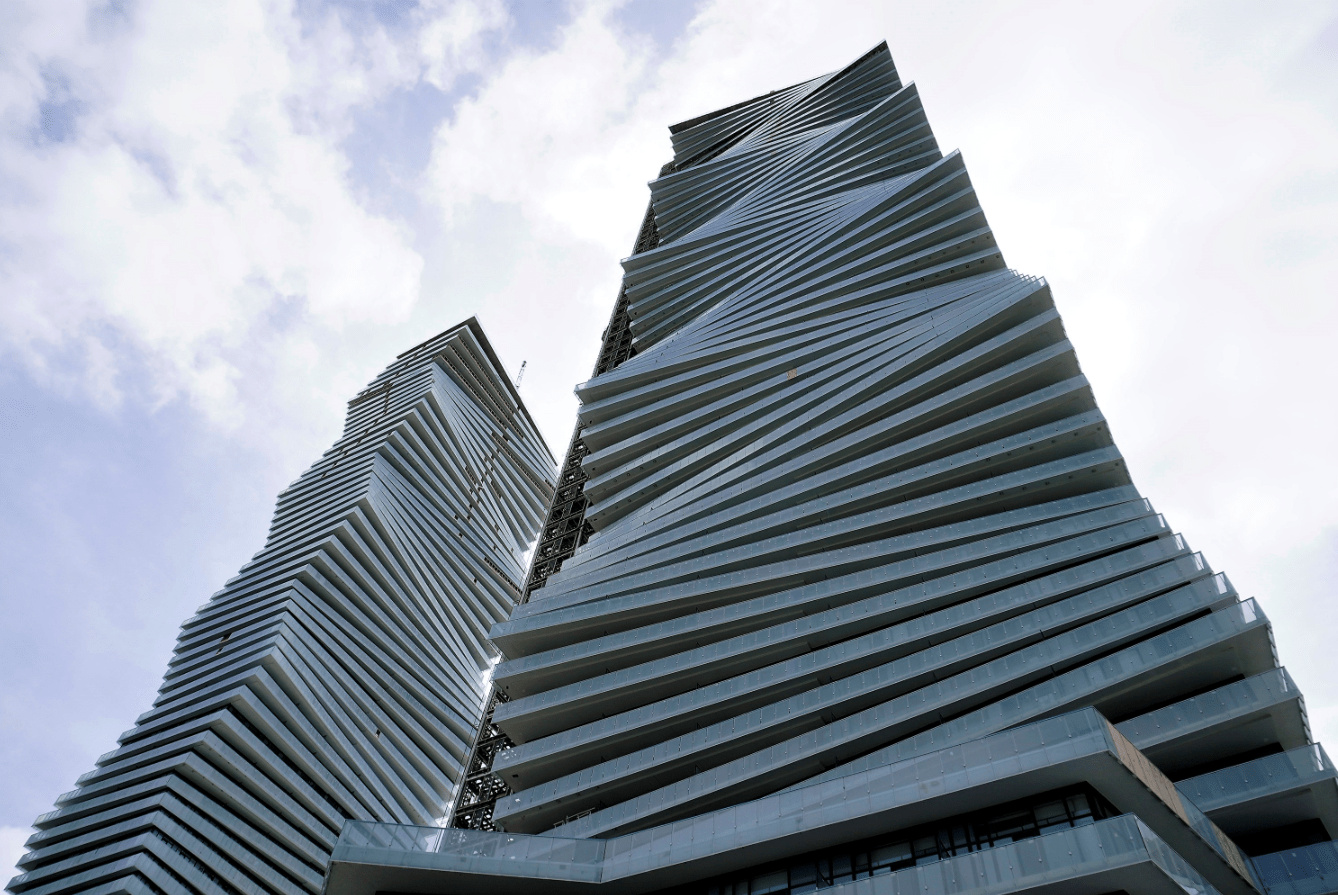
Though Blonder stresses that ‘hyper verticality’ is “just a term and tall buildings just another acceptable form of buildings”, there needs to be a balance. “We need more of everything. And not just in terms of height, we also need units that work well for families and for multi-generational families at that, something that’s very prominent in Mississauga. We need to talk about healthy unit mix.”
Over the years, the city has created incentives to help encourage a range and mix of housing including secondary suites. The Region of Peel’s My Home Second Unit Renovation Program incentivizes these units (up to a maximum of $20,000) by way of a forgivable loan to eligible homeowners who need to upgrade and legalize their existing second unit. Homeowners can receive an additional $10,000 if they rent to a tenant referred by the Region of Peel. This program is expected to expand further with appropriate funding.
The Peel HomeShare program removes barriers to other forms of shared accommodation such as co-ownership, promoting expansion of housing co-ops, and looks at how to create a Community Land Trust where affordability can be secured over the long term or perpetuity. Mayor Crombie acknowledged in her comments that too many people are being priced out of the housing market. “We are facing a housing crisis. The average cost of a detached home in our city is over $1.3 million and the average monthly rent for a two bedroom unit can range between $1600-$2800. It is costing our city in terms of job creation and investment,” she said.
According to city officials, community consultations reveal that residents are keen to see improved transit and infrastructure to make the city more livable in the future. Improved housing options, particularly with more rental protections and purpose-built rental developments, are a priority for Mississauga’s residents who want to gain access to safe and secure housing.
“Staff commonly hear about a desire for improved transit, including the need for the Hurontario LRT and Dundas BRT, as well as for a two-way GO service along the Milton line.They want better walking and cycling infrastructure, more parks and improved community facilities, and more easily access to jobs, culture and retail stores.The community has also been supportive of Mississauga’s tactical urbanism pilot projects which examine new ways to think about and enliven public spaces,” City staff said in a statement to The Pointer.
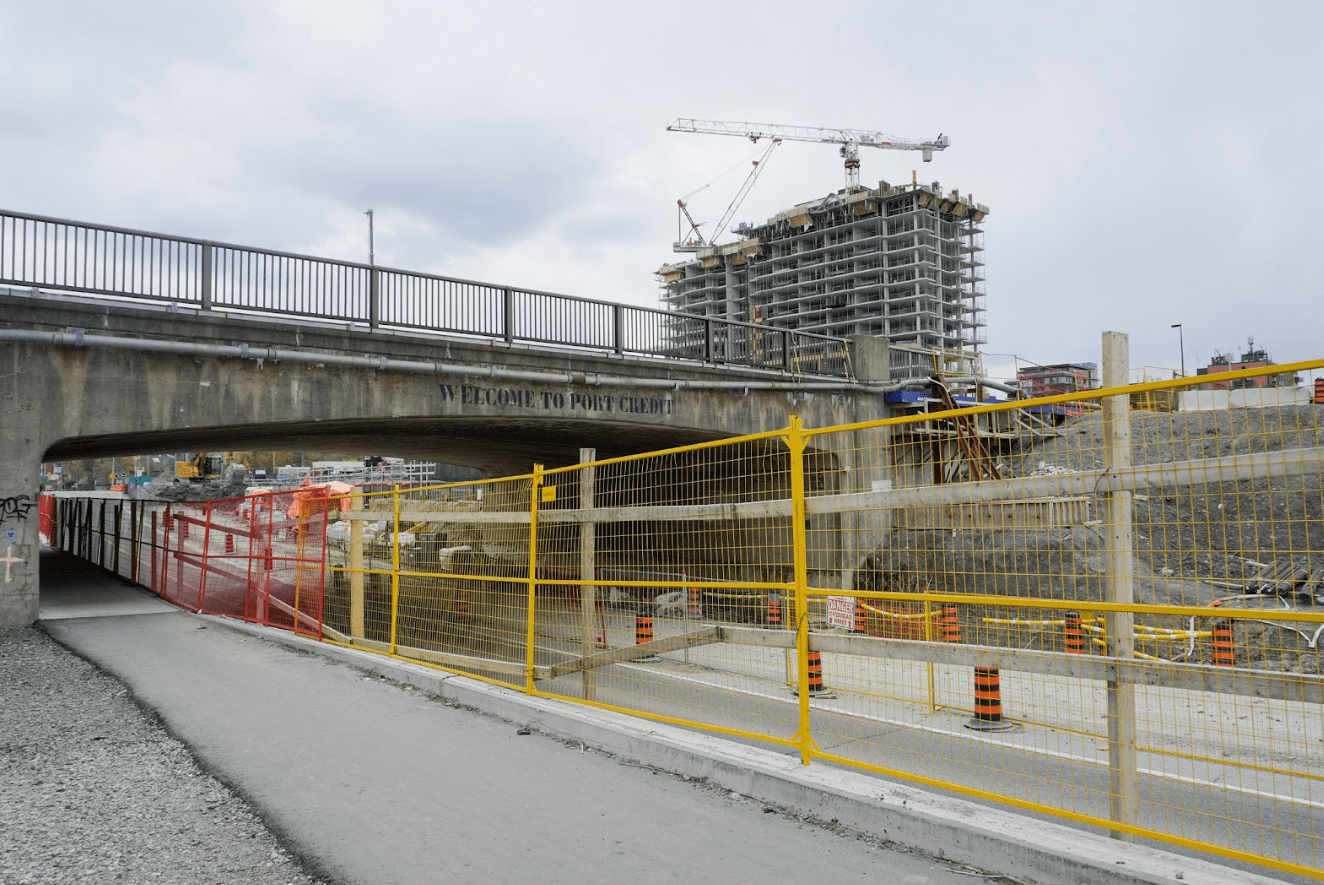
So how does the city grow smartly into the future? Is there an international city that can serve as a blueprint? Experts say that a direct comparison is almost impossible because of the unique nature of the city. “This is because the GTAH is quite possibly ground zero in North America when it comes to unprecedented growth being accommodated largely in the form of urban regeneration,” Madi says.
Barcelona comes to mind as a model city, primarily because much of what is being suggested for Mississauga has already been done in this coastal mediterranean haven with considerable success. Still held as the gold standard when it comes to innovative urban planning, Barcelona boasts urban spaces that are both expansive and compact. The city’s main focus has been on rehabilitating unused or decrepit pockets and reining in urban sprawl by choosing to redevelop areas instead of stretching out to accommodate new development. Particularly impressive is the Eixample (Catalan for expansion) a district between the old city (Ciutat Vella) and what were once surrounding small towns (Sants, Gràcia, Sant Andreu, etc.), built in the 19th and early 20th centuries. The city’s iconic grid-like planning template, consisting of about 520 octagonal blocks, with their inner courtyards and cornerside gathering places that serve as open spaces within each grid or block, is still considered one of the best examples of high quality architecture that incorporates large green spaces and wide walkable city streets that connect neighbourhoods together. The interconnected blocks of apartment buildings are about six storeys high, creating just enough density to support a lively street life and a well-used local transit system.
The human scale planning concept, which has inspired modern urban designers to limit the number of high-rise towers, was conceived by visionary architect, Ildefons Cerdà who took a scientific approach to designing a modern and efficient city. He reportedly calculated how much air one needed to breathe well, what professions inhabitants of the city might take up and what kind of provisions and facilities they would need to live and work comfortably.
Madi says there are many lessons to inform future planning here. “Mississauga is not uniform in its urban form and development patterns and there are areas that are and will continue to fair far better by virtue of the malleability of their urban structure”. Ironically these are the areas that had been settled far before the incorporation of the City in 1974 and include the settlements of Port Credit/Lakeview, Cooksville and Streetsville.
What these historic areas of the city share in common that sets them apart from much of the rest of the city are the quintessential characteristics of “complete communities”, “smart growth”, “5-minute to 15-minute communities”, he says. These include an interconnected grid of streets and blocks that are walkable, middle-density housing (townhouses, multiplexes and walk-up apartments among others), a “Main Street” with transit and open spaces and schools and other services within a walking distance. “Also worth noting are recent or emerging pockets of new neighbourhoods like Port Credit Village (2006 redevelopment of the former St. Lawrence Starch Lands), Brightwater (current redevelopment of the former Imperial Oil lands in Port Credit) and Lakeview Village (current redevelopment of the former Lakeview Power Plant) that are largely getting it right with respect to the essential qualities of sustainable, smart and complete communities,” Madi says.
The way forward for Mississauga hinges on a few crucial considerations: a robust transit system; more walkable communities; mixed development; and more stringent green standards to attract people to outdoor public spaces.
Urban planning experts are excited by Mississauga’s potential but say it will take more than an action plan and good intentions to make it a world class city.
“I believe all areas have the potential to be complete communities but the factors that can enable this to happen are dependent on the degree of disruption and costs associated with retrofitting aspects of sprawl that are not conducive to complete communities, such as road patterns, and also the degree of citizen support/NIMBY and political will to make the changes necessary,” Madi says.
“Keep in mind that attention to the quality of the public realm and architecture is paramount in any potential areas. After all, the success of a more dense environment is inherently based on residents buying-in by giving up on private space in exchange for more splendid common space.”
_____________________________________________
This article was originally published on The Pointer.
Baisakhi Roy is a writer and journalist based in Oakville. Her work has been published in several Canadian media outlets including The Globe and Mail, Huffington Post Canada, Chatelaine, Broadview and CBC. Her areas of interest and expertise lie in the intersections of immigrant life and culture in Canada. She is an avid Bollywood fan and co-hosts the Hindi language podcast KhabardaarPodcast.com.

